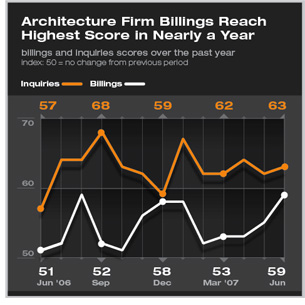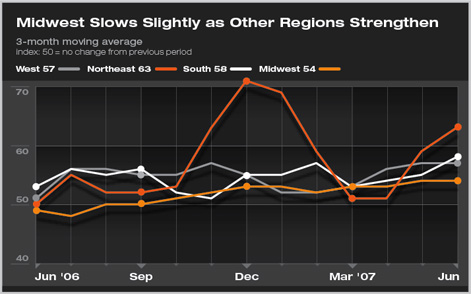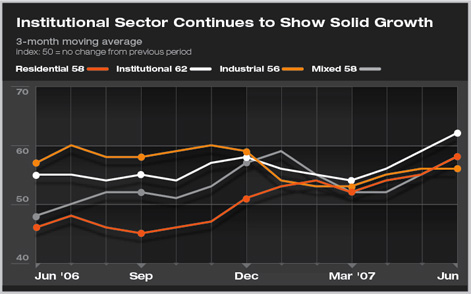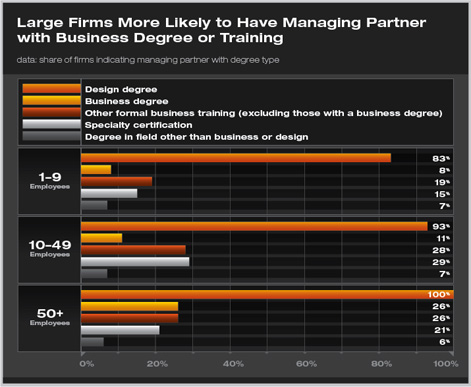
WORK ON THE BOARDS
Business conditions at architecture firms showed strong growth for the second month in a row as the AIA’s Architecture Billings Index (ABI) climbed to a score of 59.3, the highest since last August. In fact, the ABI has now increased each month since February, indicating that nonresidential construction activity should remain strong for the next several quarters. The inquiries score remained above 60 for the sixth month, signifying that new design project activity should continue to increase.
The summer months often bring strong billings as projects kick into high gear, and this year is no exception. Billings growth at firms in the Northeast region accelerated in June, and growth was reported in all other regions of the country as well. The South reported its strongest pace of growth since December 2005, while the West reported a score of 57.1, indicative of some of the best business conditions there recently. The Midwest reported a minor slowdown, but with a score of 53.6 still remains elevated well above where they were for most of the last year. The three major sectors of the construction industry (residential, commercial, and institutional) also showed continued growth in June, with the institutional sector posting the strongest growth, as it has for the entire year so far. The residential sector continues on the same steady path of moderate growth that it has been on for the last few months, following a steep downturn in 2006. The commercial/industrial score essentially is unchanged from May at 55.8.
Broader economy more mixed
Many managing partners have architecture and business training |
||
Copyright 2007 The American Institute of Architects. All rights reserved. Home Page |
||
news headlines
practice
business
design
This month, Work-on-the-Boards participants are saying:
• Homeland Security issues have generated a great deal of work
and allowed us to develop and evolve into a new business area.
—64-person firm in the South, commercial/industrial
specialization
• We are strong in mixed use and homeowner financed; instead of
buying up, people are expanding what they have. No more refinanced and
home-equity financed renovations.
—4-person firm in the Northeast, residential
specialization
• Remains strong with good activity across the range of our markets.
Overall, even though a couple of large corporate projects are on hold,
we have not seen a general slowdown or indications of one.
—320-person firm in the Midwest, institutional
specialization
• Sustainably designed buildings, even single-family homes, are
being seen as a marketing advantage to developers. That is a big driver
in our economy in the Pacific Northwest.
— 50-person firm in the West, institutional
specialization.

 Summary:
Summary:

